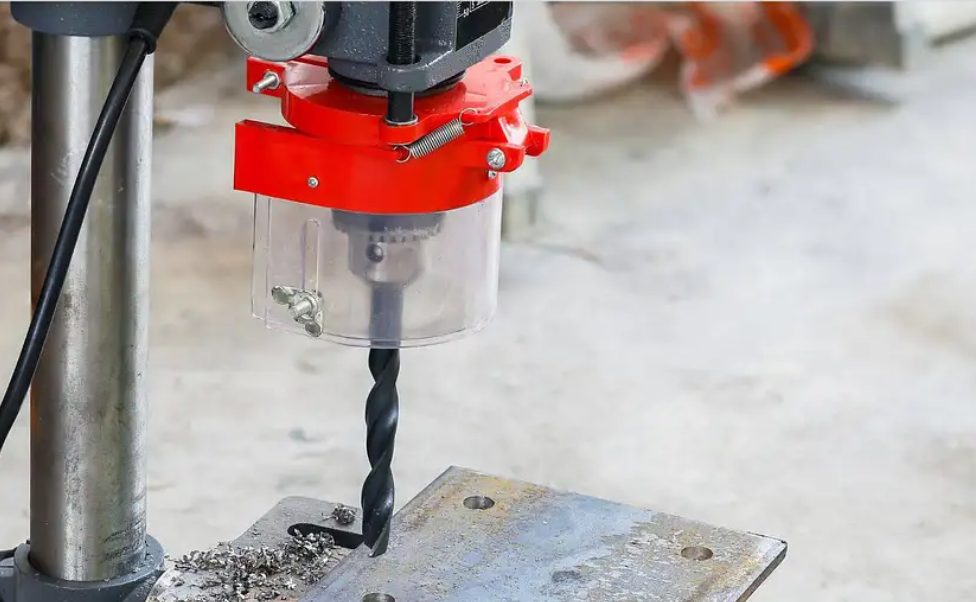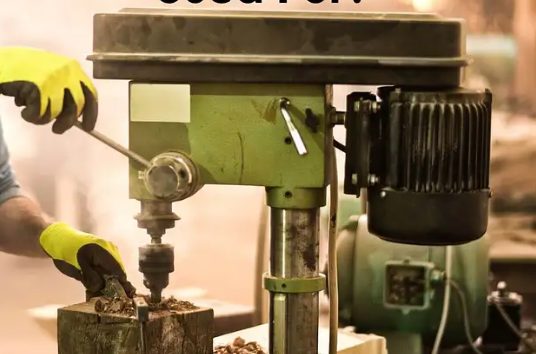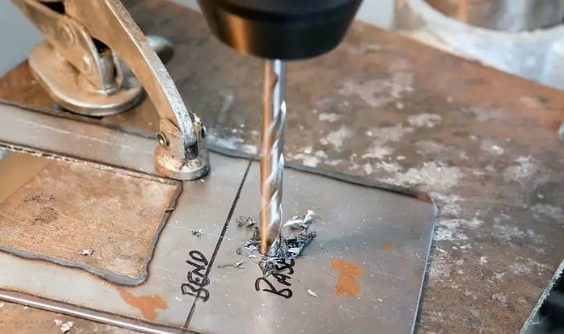What is the Quill on a Drill Press? (A Comprehensive Guide)

In this guide, I’ll walk you through the basics of the Quill on a Drill Press and offer tips on how to get the most out of it.
A quill is a type of chuck used to hold a drill bit in place on a drill press. The quill is located at the end of the spindle and typically has a Morse taper that allows it to be easily attached to the drill press. Additionally, the quill typically has a depth stop that helps to ensure accurate hole depth.
I’ll share more details below.
Types of Drill Press Quills
Several drill press quills are available on the market, each designed for specific applications.
- Plain quills are the most basic type of quill and are typically used for drilling small holes in softer materials such as wood.
- Taper point quills are designed for drilling through tougher materials such as metal. The tapered point helps to keep the drill bit from slipping.
- Adjustable quills allow you to adjust the depth of the drilled hole, which is helpful when working with delicate materials or making multiple holes of different depths.
- Spindle-type quills are designed with larger drill bits and can drill through thicker materials.
When choosing a drill press quill, selecting one appropriate for the material you will be drilling is important. Choosing the wrong quill type can damage the drill bit and the drilled material.
What is the Quill on a Drill Press Used For?
The quill on a drill press is used to hold a drill bit in place and to control the depth of the hole being drilled. The depth stop on the quill allows the user to set the maximum depth of the hole, ensuring accuracy. The quill’s Morse taper also allows it to attach to the drill press easily.

The quill allows the direction and speed of the drill to be more controlled as it makes its way into a hard-to-reach area.
The most common applications of a quill drill press include drilling holes, and jigs, creating holes for screws, and cutting metals.
To ensure that your drill press is working properly, keeping the quill clean and free of debris is important.
Here are some tips on how to clean the quill on your drill press:
- Use a soft bristle brush to remove debris or dirt on the quill’s surface. Avoid using anything abrasive, as this could damage the quill.
- If there is any build-up on the quill, you can use a mild solvent to remove it. Be sure to rinse the quill thoroughly with water afterward.
- If the quill is very dirty, you may need to disassemble it to clean it properly. Consult your drill press manual for instructions on how to do this.
- Once the quill is clean, lubricate it with light oil to prevent rust and corrosion.
By following these steps, you can ensure that your drill press quill will remain in good condition and work properly for many years.
How to Use a Quill Drill Bit on a Drill Press?
Using a quill drill bit on a drill press is a simple process, but there are a few things to remember to ensure the best results.
- First, select the correct type of quill for the material you will be drilling.
- Second, attach the quill to the drill press to securely hold it.
- Finally, use the correct drill bit for the hole size you need.
To attach the quill to the drill press:
- First, align the quill with the chuck.
- Next, insert the drill bit into the quill and tighten it.
- Finally, tighten the chuck around the quill to secure it in place.

Once the quill is attached, you can begin drilling your hole. Be sure to use the correct drill bit for the size hole you need to make. Drill slowly and steadily, applying consistent pressure to avoid breaking the drill bit.
If you are drilling through particularly tough material, it may be necessary to use a lubricant to help the drill bit move smoothly through the material.
Remove the quill from the drill press when you are finished drilling and release the drill bit. Be sure to store your quill and drill bits safely when they are not in use to avoid damage.
Benefits of a Quill on a Drill Press
One of the key benefits of using a quill on a drill press is that it helps to ensure more accurate hole placement. Keeping the drill bit perfectly straight can be difficult when drilling by hand, resulting in wonky holes. A quill helps to keep the drill bit straight, resulting in cleaner, more precise holes.
Another benefit of using a quill is that it allows you to apply more pressure to the drill bit. This is helpful when drilling through tougher materials, as it helps to prevent the drill bit from slipping or breaking. More control over the drill bit can help avoid damage to the material being drilled.
Finally, using a quill can help extend the life of your drill bits. This is because the quill helps to keep the drill bit from slipping, which can cause it to overheat and become damaged.
Overall, using a quill on a drill press has numerous benefits that can make your drilling projects go more smoothly. Select the correct quill type for your project and attach it to the drill press. Proper use of a quill can help you achieve better results and extend the life of your drill bits.
FAQs
What is a drill press’s quill lock?
The quill lock on a drill press is a mechanism to lock the quill in place. This is important because it helps to prevent the quill from moving during use, which can result in inaccuracies. The quill lock is typically located at the base of the quill and can be tightened or loosened as needed.
What is the quill lock’s function?
The quill lock’s function keeps the quill from moving during use. This is important because it helps to ensure more accurate hole placement. Additionally, the quill lock helps to prevent the drill bit from slipping, which can cause damage to both the drill bit and the material being drilled.
How do you tighten a drill press’s quill?
First, locate the quill lock to tighten the quill on a drill press. The quill lock is typically located at the base of the quill and can be tightened or loosened as needed. Once you have located the quill lock, tighten it until it is secure.
How do you remove a quill from a drill press?
To remove the quill from a drill press, loosen the quill lock. The quill lock is typically located at the base of the quill and can be tightened or loosened as needed. Once the quill lock is loosened, the quill can be removed from the drill press.
